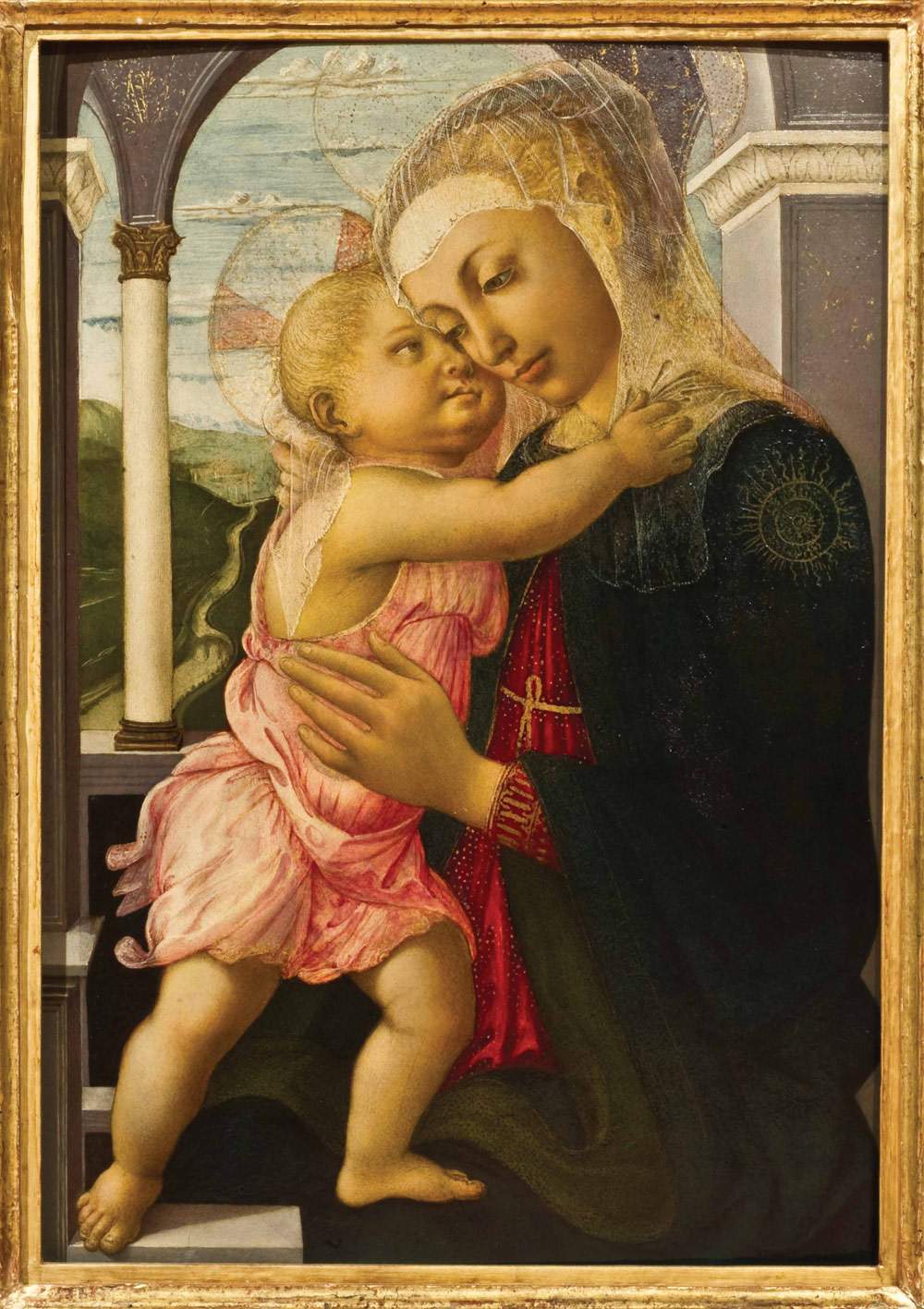An exhibition featuring Sandro Botticelli ’s Madonna of the Loggia at theHermitage in St. Petersburg opens on November 17, 2019. In fact, the masterpiece from the Uffizi Galleries will be on display for the first time at the famous Russian museum venue until February 16, 2020, as part of Masterpieces of the World’s Museums at the Hermitage.
The work toured first to theEastern Economic Forum at the University of Vladivostok, then to the Primorye State Art Gallery in Vladivostok, and now it can be admired at the Hermitage. The stages of the exhibition, sponsored and supported by theEmbassy of Italy in Moscow, are organized by the Uffizi Galleries, with the cooperation of the various host venues, with the collaboration of MondoMostre and the support of Sberbank. In addition, on the initiative of the General Partner of the project, Pao Sberbank, blind and visually impaired people will also have access to the masterpiece: along with the original work, a tactile copy of the painting will be exhibited with the appropriate audio guide.
"The exhibition of Sandro Botticelli’s Madonna of the Loggia, on the occasion of Italy’s first participation in the Eastern Economic Forum in Vladivostok, was a valuable opportunity to present the extraordinary beauty of Italian art in the Russian Far East, where in the past the Italian Embassy in Moscow had never organized exhibitions featuring the excellence of our pictorial art. The work, which was exhibited in September at the Primorye National Gallery in Vladivostok, will be from next November 17 at the State Hermitage Museum in St. Petersburg, making an evocative ideal journey along the entire territory of the Federation. It is therefore a unique event, with great symbolic value, which responds to the intention of bringing our culture to even the most distant regions, making our art more accessible to the many lovers of Italy throughout the Federation," said Italian Ambassador to Moscow Pasquale Terracciano.
"This exhibition reaffirms the friendship and collaboration not only between Italy and Russia, but also between the top cultural institutions of our countries. In this case, the Uffizi and the Hermitage seal a tradition already established centuries ago: Florence repeatedly welcomed Dostoevsky, who between 1868 and 1869 finished his novel The Idiot while staying in front of the Pitti Palace. And in the same palace, formerly the residence of the Grand Dukes, the new home of the prestigious collection of Russian icons belonging to the Uffizi Galleries will be opened at Christmas. I invite the Italian and Russian public to come and see these wonderful works, which were already purchased by the Medici and later by the Grand Dukes of Habsburg Lorraine," added the director of the Uffizi Galleries, Eike Schmidt.
In addition to Botticelli’s work, a Greek icon belonging to the same iconographic type, namely the Mother of God Eleousa (of Tenderness), is on display. The Hermitage is presenting the latter, dating from the second half of the 15th century, for the first time. The intent of the exhibition is to present two different parallel lines of development in painting, the Greek and the Latin manner. The Hermitage Icon is an example of the Greek manner.
The exhibition is curated on the Hermitage side by Tatiana Kustodieva and Zoya Kuptsova of the Hermitage Department of Western Figurative Art.
For info: www.hermitagemuseum.org
Image: Sandro Botticelli, Madonna of the Loggia (c. 1467; tempera on panel, 72 x 50 cm; Florence, Uffizi Gallery)
 |
| For the first time, Botticelli's Madonna of the Loggia stars at the Hermitage |
Warning: the translation into English of the original Italian article was created using automatic tools. We undertake to review all articles, but we do not guarantee the total absence of inaccuracies in the translation due to the program. You can find the original by clicking on the ITA button. If you find any mistake,please contact us.